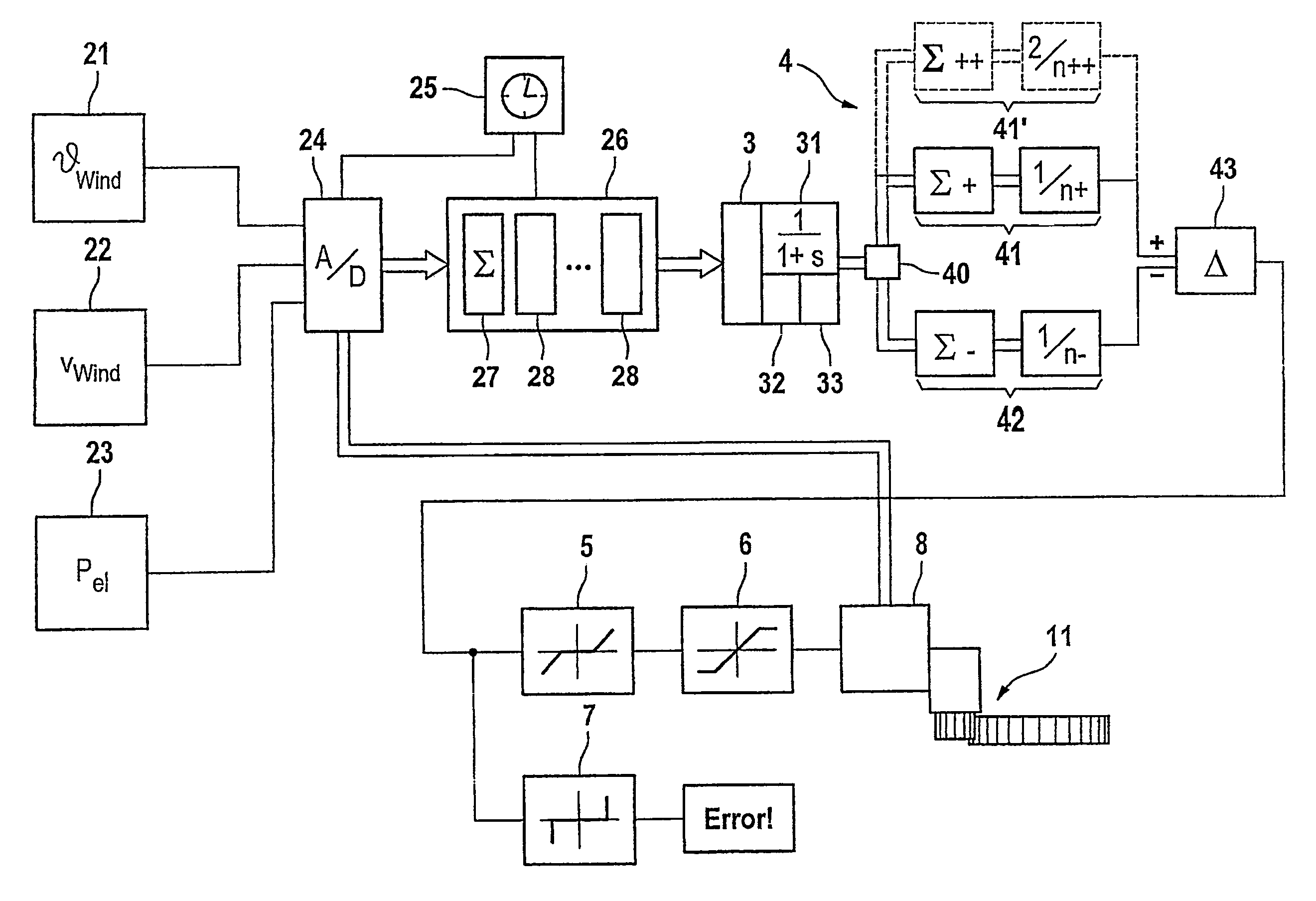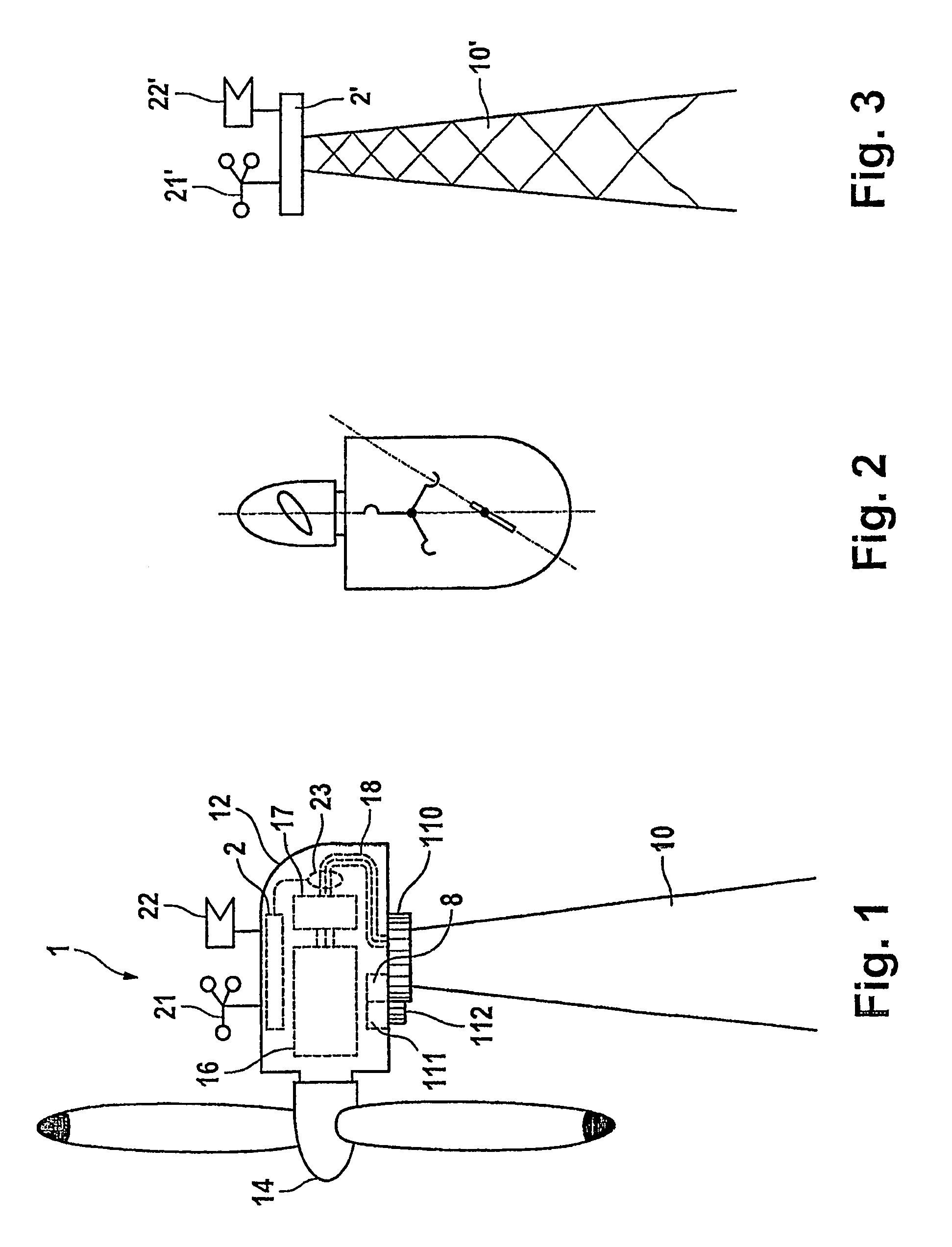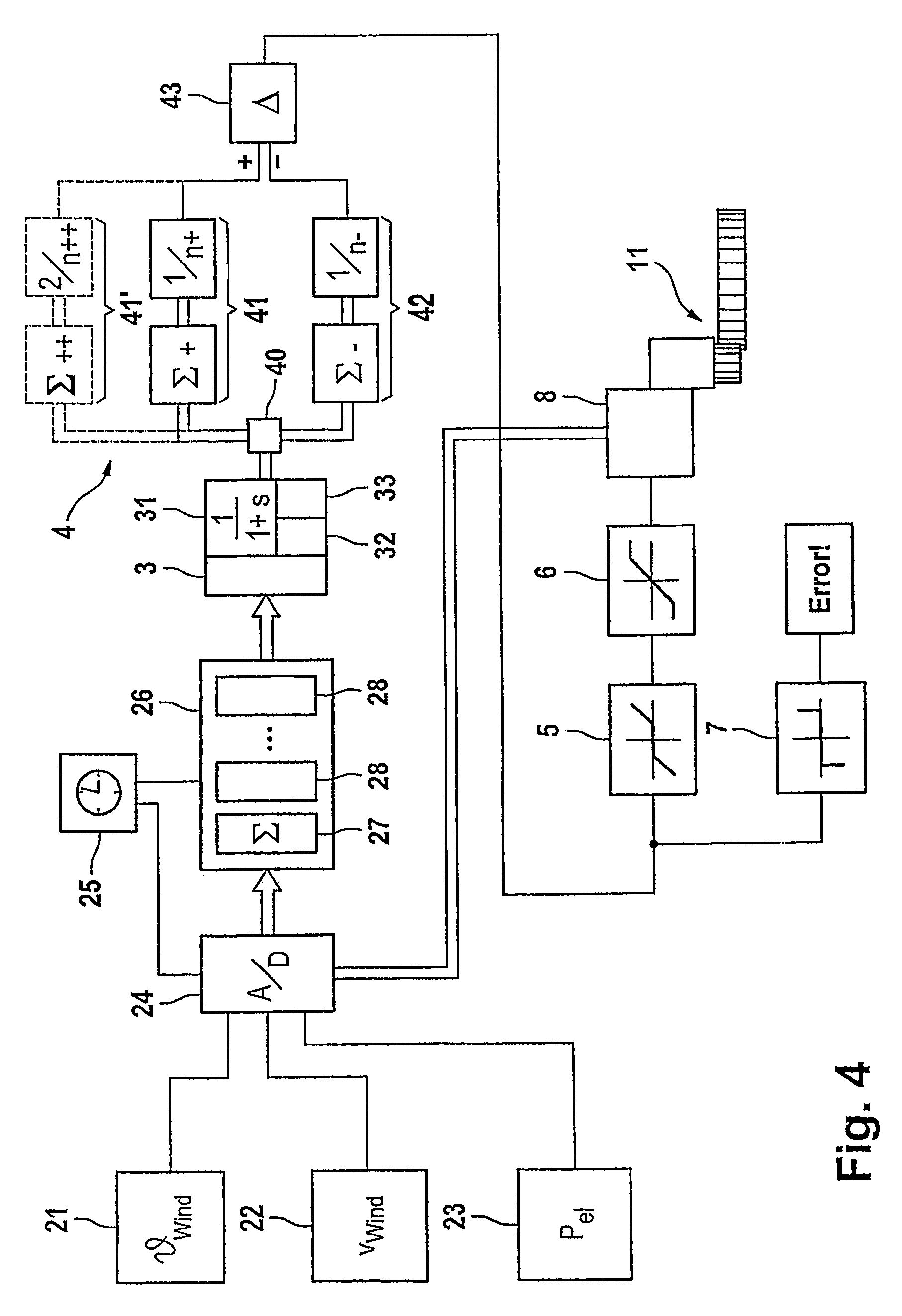Wind turbine and method for the automatic correction of wind vane settings
a technology of automatic correction and wind turbine, applied in the direction of electric generator control, machines/engines, mechanical equipment, etc., can solve the problems of not being able to achieve the optimal rotor alignment on its own, and other types of position errors can be compensated, so as to achieve less complexity and more accurate alignment
- Summary
- Abstract
- Description
- Claims
- Application Information
AI Technical Summary
Benefits of technology
Problems solved by technology
Method used
Image
Examples
Embodiment Construction
[0034]FIG. 1 shows a wind energy installation according to one exemplary embodiment of the invention, which has a tower as the pylon 10 at whose tip a machine housing 12 is arranged such that it can pivot. A rotor 14 with a plurality of blades is arranged such that it can rotate on one end face of the machine housing 12. This acts by means of a shaft, which is not illustrated, on a generator 16 in order to produce electrical power. Furthermore, a converter 17 and lines 18 are provided in order to pass the electrical power into the tower 10, and from there to the loads. Furthermore, a controller 8 for azimuth adjustment of the machine housing 12 is arranged in the machine housing 12. Sensors 21, 22 for wind parameters (wind strength and wind direction) as well as an electrical power measurement device 23 and a pivoting device 11, as an actuator, interact with this controller 8.
[0035]The mechanical design for azimuth adjustment will be explained first of all. A large circumferential t...
PUM
 Login to View More
Login to View More Abstract
Description
Claims
Application Information
 Login to View More
Login to View More - R&D
- Intellectual Property
- Life Sciences
- Materials
- Tech Scout
- Unparalleled Data Quality
- Higher Quality Content
- 60% Fewer Hallucinations
Browse by: Latest US Patents, China's latest patents, Technical Efficacy Thesaurus, Application Domain, Technology Topic, Popular Technical Reports.
© 2025 PatSnap. All rights reserved.Legal|Privacy policy|Modern Slavery Act Transparency Statement|Sitemap|About US| Contact US: help@patsnap.com



